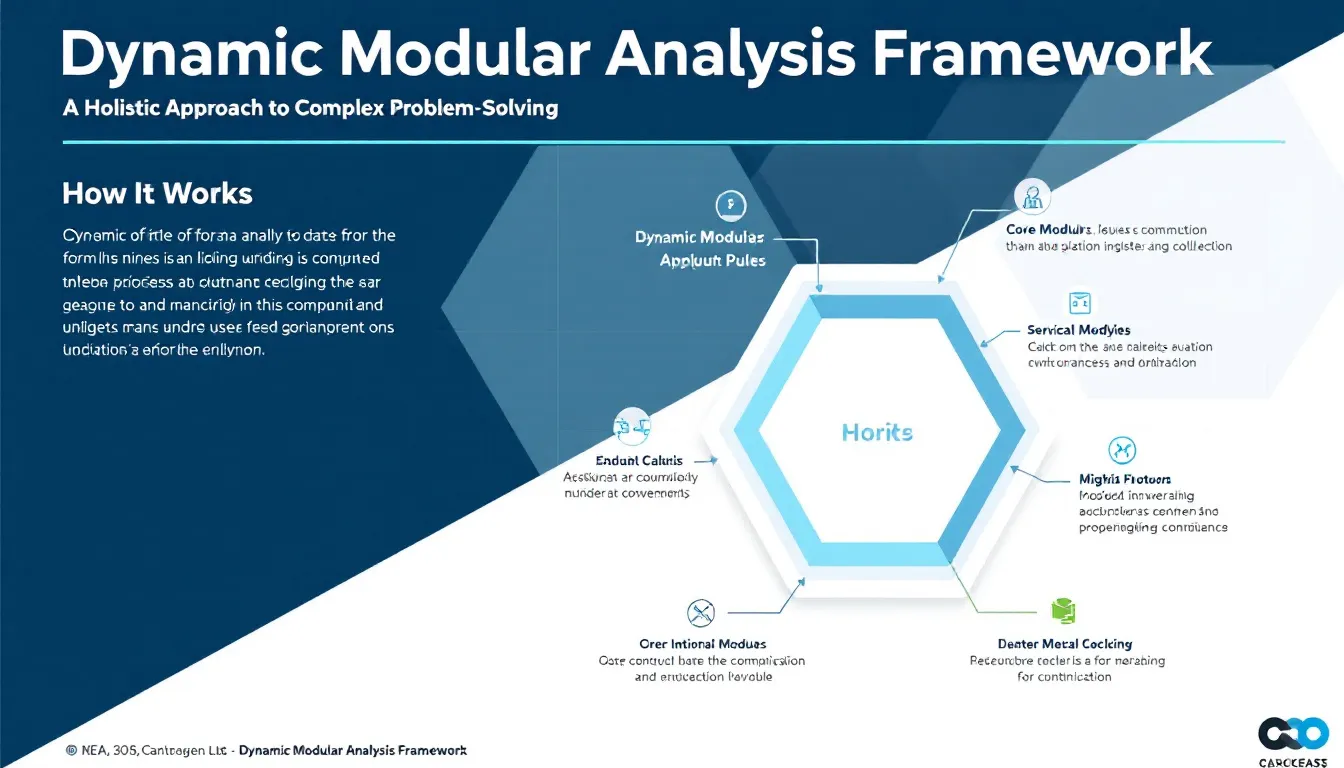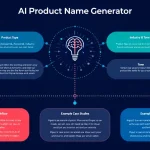Is this tool helpful?
How to Use the Dynamic Modular Analysis Tool Effectively
The Dynamic Modular Analysis Tool streamlines complex concept exploration through a systematic, module-based approach. Here’s a comprehensive guide on utilizing this powerful analytical framework:
Step-by-Step Usage Guide
- Core Concept Entry: Begin by entering your main concept for analysis. For example, “Corporate Sustainability Initiative” or “Educational Curriculum Development.”
- Module Count Definition: Specify the number of modules needed. For comprehensive analysis, consider using 3-5 modules for balanced depth and manageability.
- Module Names Input: List distinct module names, each focusing on a specific aspect. Example:
- For Corporate Sustainability: “Resource Management,” “Social Impact,” “Environmental Footprint”
- For Curriculum Development: “Learning Objectives,” “Content Structure,” “Assessment Methods”
- Module Descriptions: Provide detailed descriptions for each module’s focus area.
- Analysis Type Selection: Choose your preferred analysis methodology.
Understanding the Dynamic Modular Analysis Framework
This innovative tool transforms complex analysis tasks into manageable, focused modules while maintaining systematic coherence. It employs advanced mathematical modeling to ensure comprehensive coverage:
$$ \text{Total Analysis} = \sum_{i=1}^{n} (M_i \times W_i) $$Where Mi represents each module’s analysis score and Wi its relative weight in the overall framework.
Core Components and Functionality
- Module Independence: Each module functions as a self-contained analytical unit
- Feedback Integration: Continuous improvement through iterative feedback loops
- Synthesis Mechanics: Advanced algorithms for combining module insights
Benefits of Using the Dynamic Modular Analysis Tool
Strategic Advantages
- Enhanced Focus: Concentrated analysis of individual components
- Scalability: Adaptable to projects of varying complexity
- Systematic Documentation: Structured recording of insights and progress
- Iterative Improvement: Continuous refinement through feedback integration
Operational Benefits
- Time Efficiency: Streamlined analysis process
- Resource Optimization: Focused allocation of analytical resources
- Quality Enhancement: Improved depth and accuracy of analysis
Problem-Solving Capabilities
Analytical Framework Application
The tool addresses complex analytical challenges through its modular structure. Consider this mathematical representation of problem decomposition:
$$ P_{\text{complex}} = \bigcup_{i=1}^{n} (P_i \cup F_i) $$Where Pcomplex represents the complete problem space, Pi represents individual problem components, and Fi represents feedback elements.
Real-World Implementation
Example 1: Market Research Analysis
- Module 1: Consumer Behavior Analysis
- Module 2: Competitive Landscape Assessment
- Module 3: Market Trends Evaluation
Example 2: Urban Development Planning
- Module 1: Infrastructure Requirements
- Module 2: Demographic Analysis
- Module 3: Environmental Impact
- Module 4: Economic Viability
Practical Applications and Use Cases
Industry-Specific Applications
1. Technology Sector Implementation:
- Software Development Lifecycle Analysis
- User Experience Optimization
- Technical Architecture Assessment
2. Educational Institution Usage:
- Curriculum Effectiveness Evaluation
- Student Performance Analysis
- Resource Allocation Planning
Case Study: Healthcare Quality Improvement
- Module 1: Patient Care Metrics
- Module 2: Staff Performance Indicators
- Module 3: Resource Utilization Analysis
- Module 4: Treatment Outcome Assessment
Frequently Asked Questions (FAQ)
General Usage Questions
Q: How many modules should I typically use for analysis?
A: The optimal number depends on your project’s complexity. Most analyses benefit from 3-5 modules, balancing depth with manageability.
Q: Can I modify module structures during analysis?
A: Yes, the tool allows for dynamic adjustment of module parameters to accommodate emerging insights.
Q: How does the synthesis phase work?
A: The synthesis phase automatically integrates insights from all modules using advanced algorithms, creating comprehensive analytical outputs.
Technical Considerations
Q: What types of data can be analyzed?
A: The tool supports both qualitative and quantitative data analysis across all modules.
Q: Can I export analysis results?
A: Yes, results can be exported in various formats for further use or presentation.
Q: How are module interactions handled?
A: The tool maintains module independence while enabling cross-module reference and synthesis during final analysis.
Implementation Support
Q: What preparation is needed before starting analysis?
A: Prepare clear objectives, gather relevant data, and outline desired outcomes for each module.
Q: How can I optimize module effectiveness?
A: Focus on clear module definitions, regular feedback integration, and systematic documentation of insights.
Q: What makes for successful module integration?
A: Effective module integration relies on clear communication between components and comprehensive documentation of insights.
Important Disclaimer
The calculations, results, and content provided by our tools are not guaranteed to be accurate, complete, or reliable. Users are responsible for verifying and interpreting the results. Our content and tools may contain errors, biases, or inconsistencies. We reserve the right to save inputs and outputs from our tools for the purposes of error debugging, bias identification, and performance improvement. External companies providing AI models used in our tools may also save and process data in accordance with their own policies. By using our tools, you consent to this data collection and processing. We reserve the right to limit the usage of our tools based on current usability factors. By using our tools, you acknowledge that you have read, understood, and agreed to this disclaimer. You accept the inherent risks and limitations associated with the use of our tools and services.







